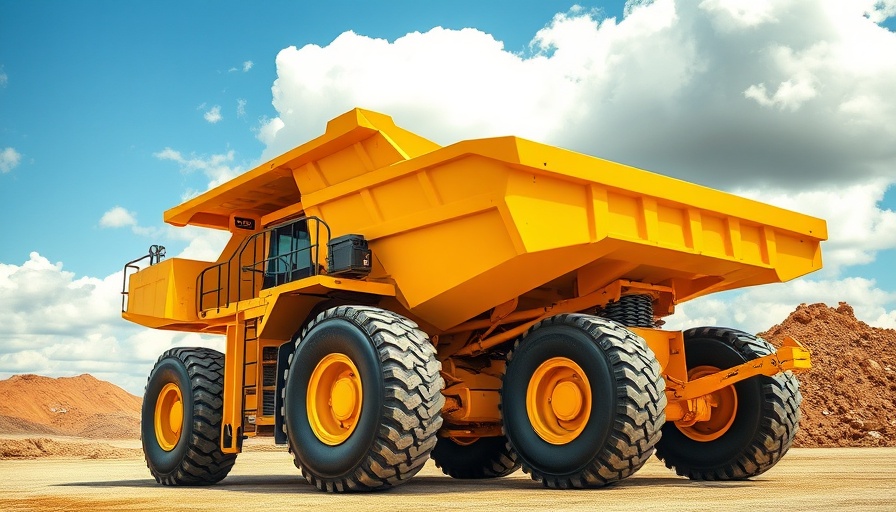
Introducing the Next Generation of Articulated Dump Trucks
In an exciting step forward for the construction equipment industry, John Deere has unveiled its latest articulated dump trucks, the 260 P-Tier, 310 P-Tier, 410 P-Tier, and 460 P-Tier models. These trucks, revealed at the 2025 Construction Field Days event in Sacaton, Arizona, feature significant upgrades focusing on performance, reliability, and operator convenience.
The Power of the New JD14 Engine
At the heart of the new models is the JD14 engine, which replaces the previous 13.5-liter PowerTech 6135 engine used in prior models. Deere’s product manager for articulated dump trucks, Kasey Kelly, highlights that the JD14 engine not only enhances reliability but also provides additional space within the engine compartment, facilitating easier servicing and maintenance.
This design focus reflects a growing trend in the industry, emphasizing the importance of accessibility. The new engine utilizes Hydraulic Lash Adjusters and integrates oil and coolant paths, contributing to a 20% reduction in repair time due to fewer maintenance needs. These enhancements make the truck not just operator-friendly but also maintenance-friendly, encouraging more uptime in operations.
Next-Level Jobsite Awareness with Advanced Vision Systems
Complementing the new engine is an Advanced Vision System, complete with three new eight-inch display monitors that serve as virtual mirrors for operators. This technology is crucial for enhancing jobsite awareness, reducing the risk of accidents, and increasing overall efficiency on site. Enhanced visibility is becoming a key priority for construction equipment manufacturers, as sites grow increasingly complex and crowded.
Fuel Efficiency and Environmental Considerations
In an era where sustainability is paramount, the JD14 engine introduces a High Pressure Common Rail (HPCR) fuel system that promises improved fuel economy compared to its predecessor. Not only does this feature reduce operational costs for contractors, but it also aligns with growing environmental regulations and the industry’s move towards greener technologies.
Smart harnessing and optimized battery access further boost the overall system’s durability and maintenance efficiency. As environmental concerns mount, such innovations are crucial for meeting new regulations while maintaining cost-effectiveness in operations.
Future Trends in Articulated Dump Truck Design
As John Deere leads in technological advancements, the future of articulated dump trucks looks promising. The integration of advanced systems like the JD14 engine and cutting-edge displays are just the beginning. Manufacturers are likely to continue innovating, focusing on automation and technology to improve safety and efficiency even further.
In the bigger picture, trends indicate that industry players will increasingly prioritize eco-friendly technologies and smart systems, paving the way for a new era of construction equipment that not only meets operator needs but also aligns with broader environmental goals.
Practical Insights for Contractors
For home service contractors and construction professionals, staying informed about such developments is vital. The advancements introduced in the newer John Deere models provide valuable lessons on enhancing serviceability and operator comfort. Recognizing the importance of reduced downtime and improved efficiency can offer contractors a competitive edge in a rapidly evolving market.
Understanding these innovations helps contractors better assess their equipment choices, align with industry trends, and ultimately serve their clients more effectively. As these features become standard, being educated about them can greatly influence equipment investment decisions and operational strategies in the future.
Considerations for Equipment Purchases
The updates in the articulated dump trucks from John Deere exemplify why continual education and market awareness are crucial in making purchasing decisions. When considering new equipment, contractors should evaluate the potential return on investment that newer features provide, including improved maintenance efficiency and technology-driven enhancements.
Furthermore, understanding evolving technologies can prepare contractors to leverage these tools effectively, enhancing their service offerings in the increasingly competitive landscape of home and commercial services.
Call to Action: Stay Ahead of the Curve
As technology rapidly evolves within the construction industry, taking proactive steps to educate yourself can put you at the forefront of these changes. Look for updates on equipment trends, attend industry events, and engage with content that enhances your knowledge. Staying informed ensures that you can make the best choices for your business and serve your clients effectively, keeping pace with an industry that's always on the move.
 Add Row
Add Row  Add
Add 




Write A Comment